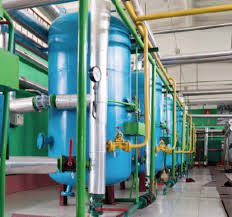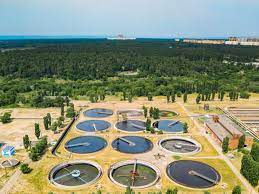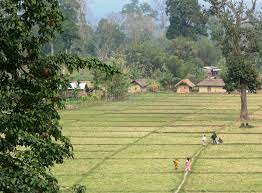Health Hazards Associated with Water Treatment
Workers in the wastewater treatment sector are responsible for the day-to-day operation, maintenance, trouble-shooting and handling of special problems of municipal, industrial, and other wastewater treatment plants.
Occupations can include: Wastewater Plant Operator, Senior Operator, Water Resources Specialist, Maintenance Operator, etc in both municipal and private facilities.
Hazards associated with water treatment
Workers in this sector are exposed to a variety of hazardous chemical and biological materials contained within the effluents and the reagents used in the water processing or generated during the water treatment.
Chemical agents may cause acute poisoning, chemical accidents (e.g., skin burns, injury to the eyes, etc.) damage to the respiratory system, allergies, dermatitis, chronic diseases, etc. Biological agents include pathogens such as bacteria, protozoa, viruses, helminthes and fungi.
Read Also : Meaning and Concepts of Design of Waste-water Treatment Units
There may be injuries by slips, trips and falls on wet floors; by falls into treatment ponds, pits, clarifiers or vats and by splashes of hazardous liquids; they may suffer cuts and pricks from sharp tools, contusions, etc.
There is also exposure to hazards related to work in confined spaces. Strains and sprains are the most common types of injuries.
The three primary types of exposure risks are:
1.Biological
There is a high potential for illnesses arising from contact with viruses, bacteria and other microorganisms in sewage.
The most serious viral risk is hepatitis. The most serious bacterial risk is tetanus.
2. Chemical
The main routes of exposure are hand-to-mouth contact. Breathing in a suspension of particles (aerosols) is a less common means of exposure but may occur whenever sewage is agitated or aerosolized. This occurs most commonly near incoming wastewater inlets and sludge treatment areas.
3.Metals
Metals are generally not air-stripped into the air in sufficient quantities to be significant (with the exception of mercury). Therefore, they accumulate either in sludge or pass through into the receiving water. Other possible hazards include asbestos and radioactive materials from medical facilities.

The five main categories of pathogens are:
Bacteria, Viruses, Protozoa, Helminths (parasitic worms), Fungi.
Treatment processes do not eliminate the risk of exposure. The primary treatment process may remove 80 – 90% of Salmonella; 50% of Mycobacterium; and coliform removal varies from 27 – 96%. The secondary treatment process removes from 50 – 90% of these pathogens.
Activated sludge has a low removal rate of 85 – 99% for pathogenic bacteria. Waste solids do contain surviving pathogens. Anaerobic digestion appears to reduce pathogens by 74% to 97%.
Tuberculosis, roundworms and certain enteric viruses appear highly resistant to treatment processes.
Disease Routes
- Inhalation
This is the most common route for chemicals or pathogens to enter the body, usually via:
- Air-stripping from wastewater
- Bubble aeration
- Workers working near weirs, outfall and aerated tanks
- Dewatering processes
- Drying, compacting, incineration
- Exposure to chemicals while removing debris from treatment plant equipment
- Skin Contact
This is a route of entry for both chemicals and pathogens. This includes being splashed in the mouth or on the skin. Chemicals can be absorbed through the skin from contact with wastewater or sludge.
Disease organisms can enter the body through cuts, abrasions or needle sticks such as when removing screenings from a bar screen.
Ways of Improving Safety
Worker Education – Education about personal hygiene and safe work practices is extremely important to minimize contact with sewage and to prevent illnesses. While the employer bears the primary responsibility, everyone in the workplace needs to exercise caution.
Pre-planning – careful attention to personal hygiene and proper use of personal protective equipment (PPE) can greatly reduce the associated risks of exposure to sewage. It is essential that information be provided to the worker on reducing the risks of exposure and injury.
Examples of worker practices include the following:
1. Avoid direct contact with sewage
Avoid aerosolizing sewage water or minimizing exposure time in areas where aerosolizing is occurring.
Make sure ventilation systems are functioning properly when working around areas where sewage may be aerosolized.
Thoroughly cleanse all exposed injuries with soap and water and keep them covered with a bandage (preferably waterproof) while at work. Seek medication attention immediately after suffering cuts or penetrating injuries.
Read Also : The Impact of Inefficient Waste Management on Oceans
If a worker is suffering from a skin problem, they should see a physician before working with sewage.
2. Avoid touching the face, mouth, hands, eyes or nose with dirty hands or other items and avoid nail biting.
Thoroughly wash the hands and face with soap and water before eating, drinking or smoking.
Eat/smoke in designated areas away from sewage contamination. These areas must be kept free from contamination by leaving any protective clothing and boots in a separate area, for example.
In conclusion, this is important in sectors with high injury rates such as wastewater treatment. Employers and workers should update safety practices, procedures and education on a regular basis.
To keep workers safe, operators can examine their plant practices and consider implementing safety procedures.



